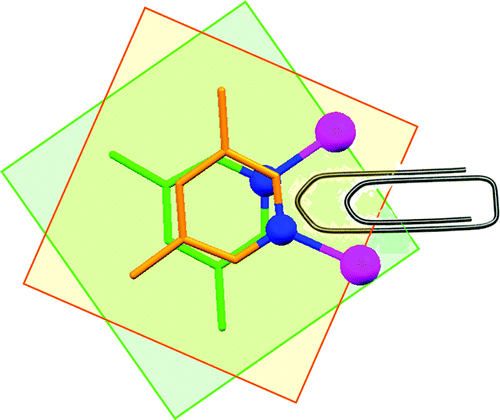The synthesis of new dinuclear complexes of the general formula in,in-{[RuII(trpy)(L)](μ-bpp)[RuII(trpy)(L′)]}3+ [bpp- is the bis(2-pyridyl)-3,5-pyrazolate anionic ligand; trpy is the 2,2′:6′,2″-terpyridine neutral meridional ligand, and L and L′ are monodentate ligands; L = L′ = MeCN, 3a3+; L = L′ = 3,5-lutidine (Me2-py), 3c3+; L = MeCN, L′ = pyridine (py), 43+], have been prepared and thoroughly characterized. Further, the preparation and isolation of dinuclear complexes containing dinitrile bridging ligands of the general formula in,in-{[RuII(trpy)]2(μ-bpp)(μ-L-L)}3+ [μ-L-L = 1,4-dicyanobutane (adiponitrile, adip), 6a3+; 1,3-dicyanopropane (glutaronitrile, glut), 6b3+; 1,2-dicyanoethane (succinonitrile; succ), 6c3+] have also been carried out. In addition, a number of homologous dinuclear complexes previously described, containing the anionic bis(pyridyl)indazolate (bid-) tridentate meridional ligand in lieu of trpy, have also been prepared for comparative purposes. In the solid state, six complexes have been characterized by X-ray crystallography, and in solution, all of them have been spectroscopically characterized by NMR and UV-vis spectroscopy. In addition, their redox properties have also been investigated by means of cyclic voltammetry and differential pulse voltammetry and show the existence of two one-electron waves assigned to the formation of the II,III and III,III species. Dinitrile complexes 6a3+, 6b3+, and 6c3+ display a dynamic behavior involving their enantiomeric interconversion. The energy barrier for this interconversion can be controlled by the number of methylenic units between the dinitrile ligand. On the other hand, pyridyl complexes in,in-{[RuII(T)(py)]2(μ-bpp)}n+ (T = trpy, n = 3, 3b3+; T = bid-, n = 1, 3b′+) and 3c3+ undergo two consecutive substitution reactions of their monodentate ligands by MeCN.The substitution kinetics have been monitored by 1H NMR and UV-vis spectroscopy and follow first-order behavior with regard to the initial ruthenium complex. For the case of 3b3+, the first-order rate constant k1 = (2.9 ± 0.3) × 10-5 s-1, whereas for the second substitution, the k obtained is k2 = (1.7 ± 0.7) × 10-6 s-1, both measured at 313 K. Their energies of activation at 298 K are 114.7 and 144.3 kJ mol-1, respectively. Density functional theory (DFT) calculations have been performed for two consecutive substitution reactions, giving insight into the nature of the intermediates. Furthermore, the energetics obtained by DFT calculations of the two consecutive substitution reactions agree with the experimental values obtained. The kinetic properties of the two consecutive substitution reactions are rationalized in terms of steric crowding and also in terms of through-space interactions.
